 | TODAY IN SCIENCE HISTORY
NEWSLETTER - 23 DECEMBER |
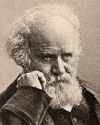 On 23 Dec 1907, Pierre Janssen died, the French astronomer who made the first photographs of the granular structure of the Sun's surface, and studied its spectrum. To get a better view of the incoming light, as free from modification as it passed through the atmosphere, Janssen resolved to set up an observatory at the highest point possible. His project to set up an observation station at the top of Mount Blanc was far from trivial, and required a mountaineering team to accomplish the construction. At his age, Janssen was not able to make the physical effort to climb to that high station, but he could cope with the other hardships when he was assisted on the ascent by men carrying him in a form of sedan chair. The article on The Observatory on Top of Mont Blanc from McClure's Magazine (1894) tells a most intriguing story of the determination of this astronomer, and the remarkable effort to build the structure atop a mountain with only snow for a foundation. On 23 Dec 1907, Pierre Janssen died, the French astronomer who made the first photographs of the granular structure of the Sun's surface, and studied its spectrum. To get a better view of the incoming light, as free from modification as it passed through the atmosphere, Janssen resolved to set up an observatory at the highest point possible. His project to set up an observation station at the top of Mount Blanc was far from trivial, and required a mountaineering team to accomplish the construction. At his age, Janssen was not able to make the physical effort to climb to that high station, but he could cope with the other hardships when he was assisted on the ascent by men carrying him in a form of sedan chair. The article on The Observatory on Top of Mont Blanc from McClure's Magazine (1894) tells a most intriguing story of the determination of this astronomer, and the remarkable effort to build the structure atop a mountain with only snow for a foundation. |
 On 23 Dec 1790, Jean-François Champollion was born, the French Egyptologist who deciphered the Rosetta Stone. Today's Science Store pick is: Cracking Codes: The Rosetta Stone and Decipherment, by Richard Parkinson. Napoleon's trooops discovered a granitoid slab in Egypt in 1799. It is a fragment of a stela inscribed with a text written in three scripts—hieroglyphic, demotic, and ancient Greek. Early Orientalists recognized immediately the potential of the Stone for the decipherment of Egyptian hieroglyphs. But that was easier to say than to do! Where others had laboured without success, Champollion succeeded in making the final breakthrough in 1822. He provided a key to understanding ancient Egyptian culture that had not been available before. It is available New from $11.95. Used from $0.01. (As of time of writing.). On 23 Dec 1790, Jean-François Champollion was born, the French Egyptologist who deciphered the Rosetta Stone. Today's Science Store pick is: Cracking Codes: The Rosetta Stone and Decipherment, by Richard Parkinson. Napoleon's trooops discovered a granitoid slab in Egypt in 1799. It is a fragment of a stela inscribed with a text written in three scripts—hieroglyphic, demotic, and ancient Greek. Early Orientalists recognized immediately the potential of the Stone for the decipherment of Egyptian hieroglyphs. But that was easier to say than to do! Where others had laboured without success, Champollion succeeded in making the final breakthrough in 1822. He provided a key to understanding ancient Egyptian culture that had not been available before. It is available New from $11.95. Used from $0.01. (As of time of writing.). | | For picks from earlier newsletters, see the Today in Science History Science Store home page. | |
 | It seems a miracle that young children easily learn the language of any environment into which they were born. The generative approach to grammar, pioneered by Chomsky, argues that this is only explicable if certain deep, universal features of this competence are innate characteristics of the human brain. Biologically speaking, this hypothesis of an inheritable capability to learn any language means that it must somehow be encoded in the DNA of our chromosomes. Should this hypothesis one day be verified, then lingusitics would become a branch of biology. - Niels K. Jerne, Danish immunologist (born 23 Dec 1911).  |
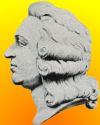 | Sand in reality is nothing else than very small stones. - Axel Fredrik Cronstedt, Swedish mineralogist, chemist and metallurgist (born 23 Dec 1722).  |
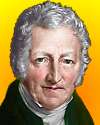 | Through the animal and vegetable kingdoms, Nature has scattered the seeds of life abroad with the most profuse and liberal hand; but has been comparatively sparing in the room and the nourishment necessary to rear them. The germs of existence contained in this spot of earth, if they could freely develop themselves, would fill millions of worlds in the course of a few thousand years. Necessity, that imperious all-pervading law of nature, restrains them within the prescribed bounds. The race of plants and the race of animals shrink under this great restrictive law; and man cannot by any efforts of reason escape from it. - Thomas Robert Malthus, English economist and demographer (died 23 Dec 1834).  |
| Before you look at today's web page, see if you can answer some of these questions about the events that happened on this day. Some of the names are very familiar. Others will likely stump you. Tickle your curiosity with these questions, then check your answers on today's web page. |
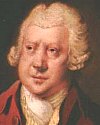 | Sir Richard Arkwright, born 23 Dec 1732, was an English textile industrialist and inventor whose use of power-driven machinery and employment of a factory system of production were perhaps more important than his inventions. His Water Frame was able to produce a thread that was far stronger than that made by the former Spinning-Jenny.
 Why was the Water Frame so-called? |
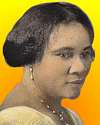 | On 23 Dec 1867, Madame C.J. Walker (born Sarah Breedlove) was a Black-American businessperson and inventor. She became a millionairess from the hugely successful marketing of her product to black women.
 With what product line did she make her fortune? |
 | Pierre Janssen (1824-1907) was a French astronomer who in 1868 discovered how to observe solar prominences without an eclipse. He noted an unknown yellow spectral line in the Sun in 1868 and forwarded the data to Lockyer, who is credited with the recognizing a new element, named after the sun.
 What is the element they discovered? |
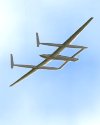 | On 23 Dec of a certain year, the experimental airplane Voyager, piloted by Dick Rutan and Jeana Yeager, completed the first non-stop, round-the-world flight without refueling. It returned safely to Edwards Air Force Base in California after travelling 24,986 miles in 216 hours (about nine days), at an average speed of 115.8 mph.
 In which decade was this flight accomplished? |
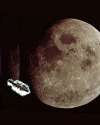 | On 23 Dec 1968, three American astronauts on Apollo 8 became the first men to orbit the Moon. Not only was this the first manned flight to and from the Moon, but Apollo 8 served to validate many of the technical procedures necessary to support upcoming lunar missions.
 Can you name one of the crew? |
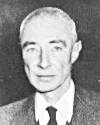 | On 23 Dec 1953, the former director of the Manhattan Project was notified that his security clearance had been suspended. There were allegations questioning his trustworthiness when accused of association with Communists.
 What is name of this scientist? |
When you have your answers ready to all the questions above, you'll find all the information to check them, and more, on the December 23 web page of Today in Science History. Or, try this link first for just the brief answers.
Fast answers for the previous newsletter for December 22: radio telescope • Germany • palladium (1803) and rhodium (1804) • water on the brain • decade containing the year 1882 • Coney Island. |
 If you enjoy this newsletter, the website, or wish to offer encouragement or ideas, please send feedback by using your mail reader Reply button. If you enjoy this newsletter, the website, or wish to offer encouragement or ideas, please send feedback by using your mail reader Reply button.
Your click on a StumbleUpon, Google+ or Facebook social button on the site webpages is also a welcome sign of appreciation. Thank you for using them. |
To find citations for quotations go to the corresponding webpage by clicking on the “quotes” balloon icon. Sources for the thumbnails appear on today's webpage with the corresponding item.
� This newsletter is copyright 2013 by todayinsci.com. Please respect the Webmaster's wishes and do not put copies online of the Newsletter � or any Today in Science History webpage. (If you already have done so, please remove them. Thank you.) Offline use in education is encouraged such as a printout on a bulletin board, or projected for classroom viewing. Online, descriptive links to our pages are welcomed, as these will provide a reader with the most recent revisions, additions and/or corrections of a webpage. For any other copyright questions, please contact the Webmaster by using your mail reader Reply button. |
--
If you do not want to receive any more newsletters,
Unsubscribe To update your preferences and to unsubscribe visit
this link 


 On 23 Dec 1907, Pierre Janssen died, the French astronomer who made the first photographs of the granular structure of the Sun's surface, and studied its spectrum. To get a better view of the incoming light, as free from modification as it passed through the atmosphere, Janssen resolved to set up an observatory at the highest point possible. His project to set up an observation station at the top of Mount Blanc was far from trivial, and required a mountaineering team to accomplish the construction. At his age, Janssen was not able to make the physical effort to climb to that high station, but he could cope with the other hardships when he was assisted on the ascent by men carrying him in a form of sedan chair. The article on The Observatory on Top of Mont Blanc from McClure's Magazine (1894) tells a most intriguing story of the determination of this astronomer, and the remarkable effort to build the structure atop a mountain with only snow for a foundation.
On 23 Dec 1907, Pierre Janssen died, the French astronomer who made the first photographs of the granular structure of the Sun's surface, and studied its spectrum. To get a better view of the incoming light, as free from modification as it passed through the atmosphere, Janssen resolved to set up an observatory at the highest point possible. His project to set up an observation station at the top of Mount Blanc was far from trivial, and required a mountaineering team to accomplish the construction. At his age, Janssen was not able to make the physical effort to climb to that high station, but he could cope with the other hardships when he was assisted on the ascent by men carrying him in a form of sedan chair. The article on The Observatory on Top of Mont Blanc from McClure's Magazine (1894) tells a most intriguing story of the determination of this astronomer, and the remarkable effort to build the structure atop a mountain with only snow for a foundation. 



 Why was the Water Frame so-called?
Why was the Water Frame so-called? 
 With what product line did she make her fortune?
With what product line did she make her fortune? 
 What is the element they discovered?
What is the element they discovered? 
 In which decade was this flight accomplished?
In which decade was this flight accomplished? 
 Can you name one of the crew?
Can you name one of the crew? 
 What is name of this scientist?
What is name of this scientist?  If you enjoy this newsletter, the website, or wish to offer encouragement or ideas, please send feedback by using your mail reader Reply button.
If you enjoy this newsletter, the website, or wish to offer encouragement or ideas, please send feedback by using your mail reader Reply button. 

Δεν υπάρχουν σχόλια:
Δημοσίευση σχολίου